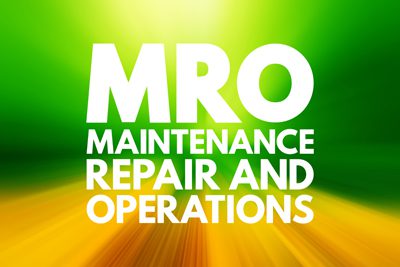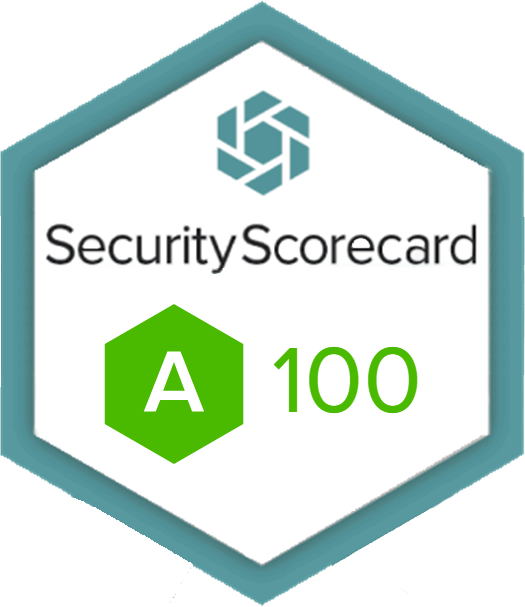 MRO stands for Maintenance, Repair, and Operations. It is a term used to describe the processes and activities involved in the upkeep of a facility, including the maintenance of the facility, the systems that run inside of it, and the assets and equipment used inside the facility to produce the main business output. MRO is an essential part of any manufacturing or industrial operation, and it is crucial to have a comprehensive plan that outlines the maintenance, repair, and replacement activities required to keep the facility running smoothly.
MRO stands for Maintenance, Repair, and Operations. It is a term used to describe the processes and activities involved in the upkeep of a facility, including the maintenance of the facility, the systems that run inside of it, and the assets and equipment used inside the facility to produce the main business output. MRO is an essential part of any manufacturing or industrial operation, and it is crucial to have a comprehensive plan that outlines the maintenance, repair, and replacement activities required to keep the facility running smoothly.
Why is MRO important?
MRO is essential to the success of any manufacturing or industrial operation. It helps to ensure that equipment and facilities are operating smoothly, reducing downtime, increasing productivity, and lowering costs. An effective MRO strategy involves having a comprehensive plan that outlines the maintenance, repair, and replacement activities required to keep the facility running smoothly. It also involves having the right tools and supplies on hand to perform maintenance and repairs quickly and efficiently.
Types of Maintenance, Repair, and Operations (MRO)?
Within the expansive landscape of Maintenance, Repair, and Operations (MRO), a nuanced understanding reveals a multifaceted approach, often categorized into four primary dimensions:
Infrastructure Repair and Maintenance
This important category centers on preserving the integrity of the facility itself. It spans the meticulous upkeep of diverse elements, including the building structure, electrical systems, and plumbing. By attending to these foundational components, organizations ensure the sustained functionality of their operational hub.
Production Equipment Repair and Maintenance
At the core of manufacturing vitality lies the maintenance and repair of production machinery and equipment. This involves strategic interventions to uphold operational efficiency, prevent breakdowns, and sustain the seamless progression of the production line. Addressing the unique needs of each machine ensures a robust manufacturing process.
Material Handling Equipment Maintenance
Focused on the machinery instrumental in material movement within the facility, this category encompasses the care and maintenance of equipment like forklifts and conveyors. By ensuring the optimal functioning of these material handling tools, organizations facilitate a smooth flow of materials, enhancing overall operational efficiency.
Tooling and Consumables
Important to the intricate tapestry of production, this facet involves the meticulous maintenance and timely replacement of tools and supplies essential to daily operations. From hand tools to consumables, this category ensures that the tools supporting the production process are consistently in peak condition, contributing to a seamless workflow.
By delving into these distinct categories, organizations can navigate the dynamic realm of MRO with a tailored and strategic approach. Beyond merely categorizing, it is imperative to recognize the unique demands of each category and implement targeted maintenance plans. This holistic perspective ensures that the entire spectrum of MRO activities harmonizes to fortify the operational foundation of the organization.
Best Practices for an Effective MRO Strategy
Implementing an effective MRO strategy requires a comprehensive approach that involves several key best practices:
Develop a Comprehensive MRO and Maintenance Management Plan
Formulate a comprehensive plan that intricately details maintenance, repair, and replacement activities. This well-organized plan serves as a guide for methodical operations. Additionally, integrating a Computerized Maintenance Management System (CMMS) brings numerous benefits to enhance efficiency.
Ensure Equipment Longevity and Facility Reliability
Encourage regular maintenance and timely repairs for equipment and facility components. Consistent upkeep is the cornerstone for preventing breakdowns and ensuring an extended lifespan for your assets.
Utilize Data for Informed Decision-Making
Employ data and analytics to make informed decisions regarding maintenance activities and maintenance management. Data-driven insights support proactive and strategic decision-making.
Invest in Adequate Tools and Supplies
Provide your team with the necessary tools and supplies crucial for efficient task execution. Having the right resources readily available streamlines maintenance processes and minimizes downtime.
Empower Your Maintenance Team
Continuously invest in the training and empowerment of your maintenance team. Furnishing them with essential skills, knowledge, and maintenance management capabilities enhances their overall effectiveness.
Tips for Improving MRO
Here are some tips for improving your MRO strategy:
Utilize Advanced MRO Software, Including CMMS
Elevate Task Management and Scheduling Precision:
Leveraging cutting-edge MRO software, especially incorporating a Computerized Maintenance Management System (CMMS), enhances the efficiency of managing maintenance tasks and schedules. CMMS introduces automation, ensuring tasks are executed systematically, reducing errors, and optimizing resource allocation.
Prioritize Regular Inspections for Proactive Maintenance
Anticipate Issues with Regular Audits:
Conducting routine inspections serves as a proactive approach to maintenance. By consistently identifying and addressing potential issues before they escalate, your MRO strategy gains resilience. Regular audits contribute to a culture of preventive maintenance, minimizing the impact of unexpected breakdowns.
Efficient Organization of Spare Parts, Tools, and Supplies
Streamline Accessibility for Swift Responses:
Organizing spare parts, tools, and supplies efficiently is crucial for maintaining an agile response to maintenance needs. Implementing a well-organized inventory system ensures that the right components are easily accessible when needed, minimizing downtime and expediting repairs.
Leverage Data and Analytics for Strategic Insights
Harness the Power of Predictive Analytics:
Integrating data and analytics into your MRO strategy provides valuable insights. Utilize predictive analytics to identify trends and potential issues early on. This proactive approach allows for strategic decision-making, enabling your team to address concerns before they impact operations significantly.
Invest in Comprehensive Training and Development Initiatives
Empower Your Maintenance Team for Peak Performance:
Ensuring your maintenance team is equipped with the skills and knowledge necessary for effective job performance is a cornerstone of a robust MRO strategy. Continuous training and development initiatives empower your team to adapt to evolving technologies and best practices, fostering a culture of excellence.
FAQs About MRO
What does MRO stand for?
MRO stands for Maintenance, Repair, and Operations.
What does MRO encompass?
MRO covers all activities essential to maintaining a company’s operational efficiency, including facility upkeep, equipment maintenance, and daily operational needs.
Why is MRO important for businesses?
MRO is crucial for businesses as it ensures the continuous functionality of facilities and equipment, minimizes downtime and contributes to overall operational excellence.
What role does a CMMS play in optimizing MRO processes?
A Computerized Maintenance Management System (CMMS) plays a crucial role in optimizing MRO processes by automating scheduling, tracking maintenance activities, and providing data for preventive and predictive maintenance, contributing to efficient MRO management.
How does MRO benefit from the implementation of a CMMS?
The implementation of a CMMS in MRO processes enhances efficiency by automating tasks, streamlining procurement, and improving overall maintenance strategies, reducing downtime and unexpected repair costs.
What is MRO Inventory?
MRO inventory encompasses the assortment of Maintenance, Repair, and Operations supplies and materials retained by a company to facilitate continuous facility maintenance, equipment repair, and daily operational requirements. This inventory comprises essentials like spare parts, tools, consumables, and other necessary materials crucial for sustaining the uninterrupted functionality of facilities and equipment. Effective management of MRO inventory holds paramount importance in minimizing downtime, streamlining maintenance processes, and bolstering overall operational efficiency.
What are the types of MRO activities?
MRO activities include infrastructure repair and maintenance, production equipment upkeep, material handling equipment maintenance, and management of tooling and consumables.
How can businesses optimize MRO processes?
Optimizing MRO involves implementing preventive and predictive maintenance strategies, utilizing technology for efficient tracking, and streamlining procurement processes for MRO supplies.
Is MRO management different for leased and owned facilities?
Yes, the approach to MRO management may vary based on whether a facility is leased or owned. Leased facilities may involve outsourcing certain maintenance tasks, while owned facilities may require in-house maintenance teams and procurement of necessary tools and materials.
How can businesses enhance MRO cost-effectiveness?
Enhancing MRO cost-effectiveness includes strategic procurement, utilizing technology like CMMS for automated scheduling, and implementing preventive maintenance to reduce unexpected repair costs.
What role does MRO play in preventing equipment failures?
MRO, through preventive and predictive maintenance, plays a vital role in identifying and addressing potential issues before they lead to equipment failures, thereby reducing downtime and production losses.
Can outsourcing MRO services be beneficial for businesses?
Outsourcing certain MRO services, such as infrastructure maintenance, can benefit businesses by allowing them to focus on core operations and ensuring specialized expertise for specific tasks.
How can technology aid in MRO management?
Technology, such as CMMS (Computerized Maintenance Management System), helps automate scheduling, track maintenance activities, and analyze data for predictive maintenance, contributing to efficient MRO management.
Other Resouces
Efficient Small Tools Management



